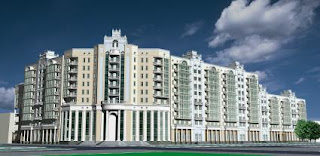
During my last trip to Tajikistan this year, I have been approached many times by people who wanted to partner up with me to invest in real estate. Apparently the price of an average residential real estate in Tajikistan (especially in Dushanbe) has doubled in the past 8 months.
That plus the number of recent commercial and residential property built in the capital makes me wonder if we are in for a real estate boom and, if so, I wonder how long will it last (and at what rate)?
The difficulty with investing in Tajikistan is that there is no hard evidence available to show the recent price dynamics of real estate. Evey piece of price information I have been able to get was basically word of mouth.
The good thing is that, whatever the underlying factors, the demand for real estate is less likely to be speculative. For one thing institutionalized rel estate investing (represented in other countries by hedge funds, etc.) which could potentially fuel speculative purchasing is nonexistent in Tajikistan.
I have been doing some number crunching to see whether investing in real estate makes sense. With an investment horizon of say two years, the biggest risk will be not being able to sell the property.
The country has been stable politically for the past several years but the risk still exists. Unfortunately, there is not much one can do about political risks (except not take them?). I am not sure I could get political insurance for a speculative project like this from MIGA.
Anyway, there is however a structure that could makes sense. An average 5BR apartment in Dushanbe costs around $75-90K. In order to maximize ROI, the potential investor would have to buy residential real estate with internationals tenants. International organizations offer generous packages to their staff in the field.
So, I figure monthly rate for a nicely furnished apartment should easily fetch up to $800-1000? The IRR in this scenario from just rental payments would be 14% for the period of 48 month, which means the investor will not only be able to recoup his investments but also make an average of 14% return on his investments.
Financing such a project is no easy task. Debt could be an option though (since rental payments should be able to cover the monthly payments), but again I don't know how much banks would charge as interest for such cases. Will they do it?
I am more inclined to get equity money for this. This way risks and rewards would be evenly distributed. Plus no matter how you look at it this IS an equity risk. A very good one though!
